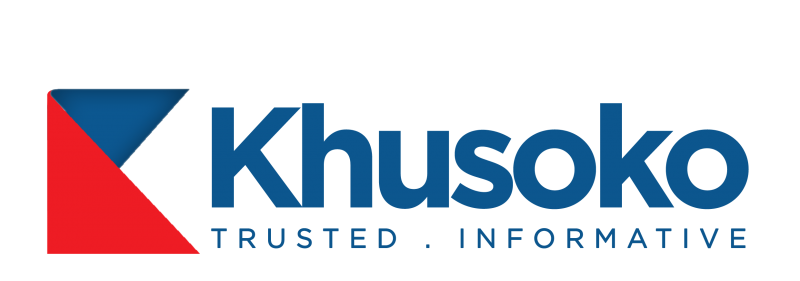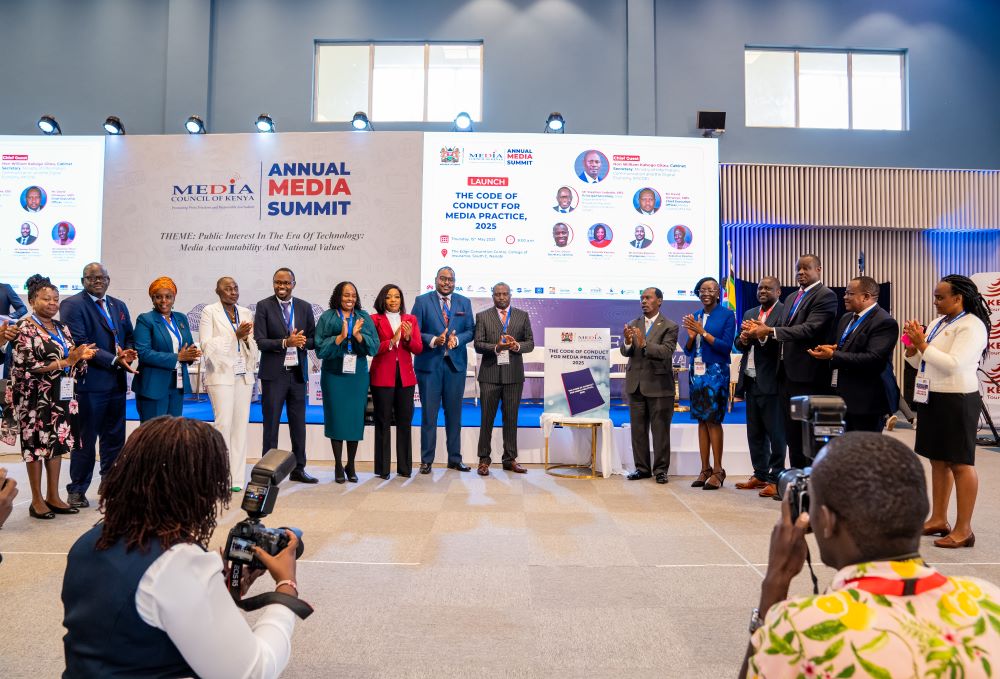The use of social media has overtaken television and radio as the nation’s top news source, according to Kenya’s 2024 State of Media Survey, launched at the 2025 Annual Media Summit themed “Public Interest in the Era of Technology: Media Accountability and National Values.”
Yet, as digital platforms rise, concerns around ethics, trust, and freedom of expression are intensifying issues echoed by leading voices in Kenya’s technology and media sectors.
Social Media’s Dominance and Shifting Habits
Primary News Source
33% of respondents now cite social media as their primary news source, edging out television (31%) and radio (26%).
Television’s weekly reach dropped sharply to 26% in 2024 from 33% in 2023. Radio’s share also fell to 23%. This decline signals the end of the “captive audience” era for broadcasters.
WhatsApp and Facebook lead digital platforms, though their usage dipped slightly in 2024, while TikTok and LinkedIn held steady.
Fragmented Consumption
Kenyans spend more time online than ever, with 31% spending at least three hours daily on social media.
While WhatsApp remains the most-used social platform (20%), its usage declined from 22% in 2023. Facebook holds steady at 20%, TikTok at 14%, and YouTube usage slipped to 12%. Instagram dropped to 8%, while platforms like Telegram, X (formerly Twitter), and Snapchat saw minor upticks.
Traditional Media Still Matters:
TV and radio remain important, especially for older demographics, but their reach is declining. Citizen TV and Radio Citizen are still the most watched and listened to, but the audience is fragmenting.
Who Leads? The Winners in TV, Radio, and Digital
Television
Citizen TV dominates, watched weekly by 75% of respondents, with 53% ranking it as their top channel-up from 35% in 2023. NTV and K24 follow, but with much lower loyalty.
Radio
Radio Citizen leads with a 29% share, followed by Radio Jambo (24%) and Radio Maisha (20%). Listenership has become more fragmented, with new stations gaining ground.
Print and Digital
Daily Nation remains the most-read newspaper (34%), though the print readership is slipping. Tuko.co.ke is the most visited news website (40%), followed by Citizen Digital (20%) and Nation Africa (13%).
Trust, Misinformation, and Media Concerns
Trust Deficit
Only 23% of Kenyans say they have “a lot of trust” in the media, while 25% have little or no trust. Television (66%) and radio (65%) remain the most trusted sources, with social media trailing at 60%.
Newspapers and legacy media social handles are trusted by 59%, and online news websites by 53%. The government’s “My Gov” paper is the least trusted at 51%.
Top Concerns
The spread of false/misleading information (21%), inadequate coverage of important issues (15%), media bias (15%), and excessive advertising (14%) are the public’s biggest worries.
Freedom of Expression
While 31% celebrate media freedom as a top achievement, 6% cite a lack of freedom of expression as a key concern, and 7% point to strict government regulation.
Technology, Ethics, and the Future of Journalism
According to KICTANet’s Freedom of Expression coverage, Kenya’s media and tech leaders encourage journalists to embrace new technologies while upholding ethical standards.
In a keynote at the Media Council of Kenya’s recent summit, Dr. Grace Githaiga, CEO of KICTANet, emphasised, “Journalists must adapt to technology while upholding ethical standards to maintain public trust and relevance in a rapidly evolving media landscape.”
This call is timely. As AI and algorithm-driven news feeds reshape how information spreads, ethical journalism and digital literacy are more critical than ever.
The survey found that 39% of Kenyans are aware of AI features in media, and nearly half (46%) use AI-enabled apps at least occasionally, a sign that the future of news will be even more tech-driven.
Speaking during the annual media summit, ICJ Kenya’s Deputy Executive Director, Demas Kiprono, who also serves as the Chairperson of the Media Complaints Commission (MCC), said, “Our work is anchored in the Code of Conduct for the Practice of Journalism, Article 34 of the Constitution, which protects media freedom, and Article 10, which enshrines national values such as accountability, transparency, and public participation.”
The Balancing Act
Ethical Challenges
With digital platforms enabling rapid news dissemination, the pressure to publish quickly can compromise accuracy and fairness. Journalists are urged to double down on verification and transparency.
Freedom of Expression
KICTANet’s ongoing advocacy highlights the need for robust protections for free speech online, especially as government regulation and content moderation increase.
Recent discussions have focused on ensuring that digital rights are not curtailed in the name of security or misinformation control.
Regional and Demographic Insights
The Media Council’s survey was robust: 3,602 respondents, 47 counties, a 100% response rate, ±1.5% margin of error.
Awareness of AI and digital tools is higher in urban (51%) and peri-urban (61%) areas, but rural communities are catching up as smartphone penetration expands. Opportunity and Responsibility
Kenya’s media is at a digital tipping point. The rise of social media as the primary news source brings both opportunity and responsibility.
As Kenyans embrace new technologies, the challenge is to ensure that ethical standards, freedom of expression, and public trust remain at the core of journalism.
During the summit, the Media Council of Kenya (MCK) launched the revised Code of Conduct for Media Practice 2025.





